After 2 years of flickering, uneven LEDs, & instant state changes, the pure BJT design finally succumbed to a modern 20 year old microcontroller. It just wasn't going to look good enough with 1970's parts, for any reasonable cost.
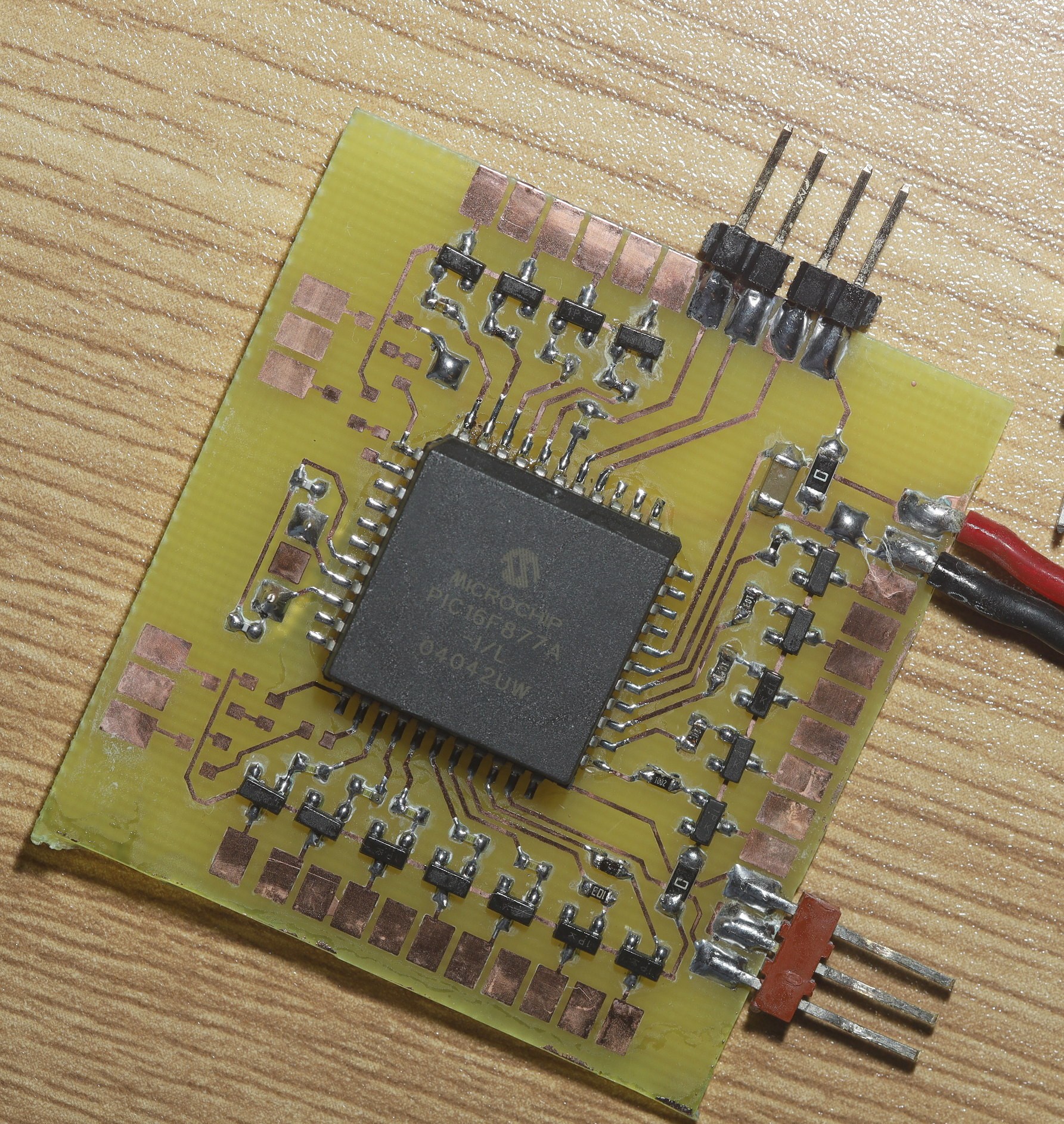
This is the last of the lion kingdom's 1st order of flash programmed microcontrollers. They were truly terrible to program in assembly with gpasm, when mplab was windows only & a virtual machine was $600 & required a bunch of kernel modules which didn't work. Using Linux made software real expensive in those days.
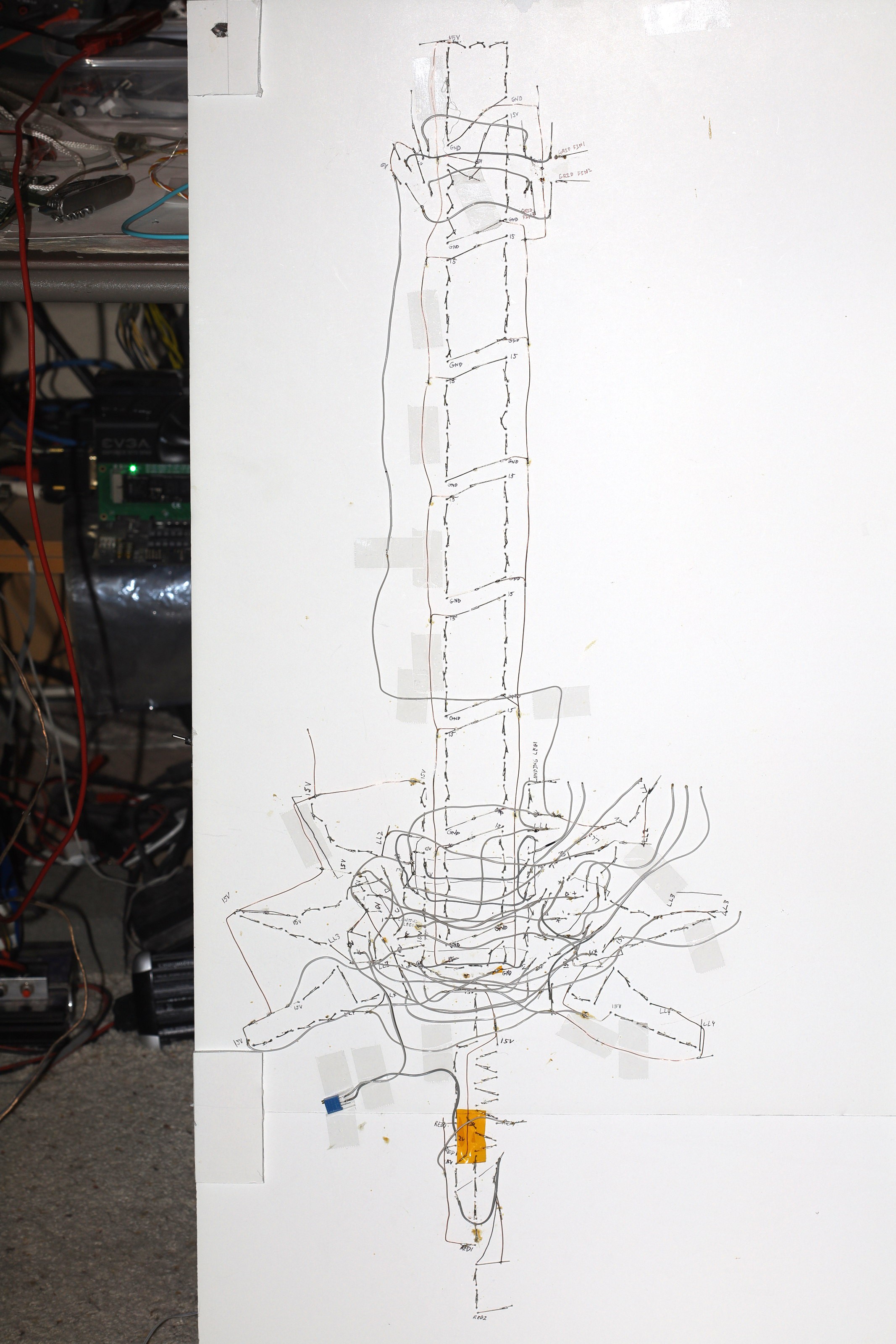
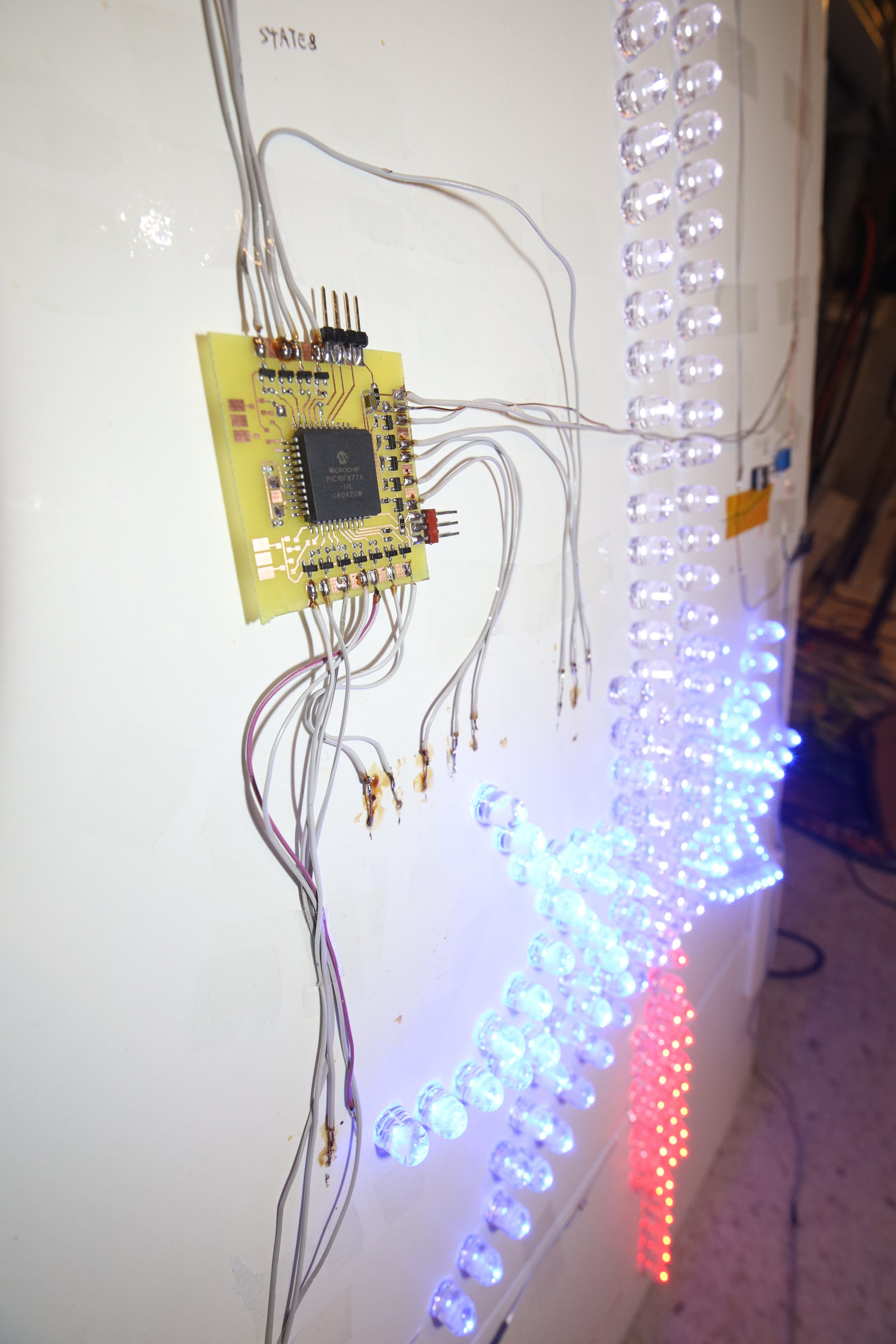
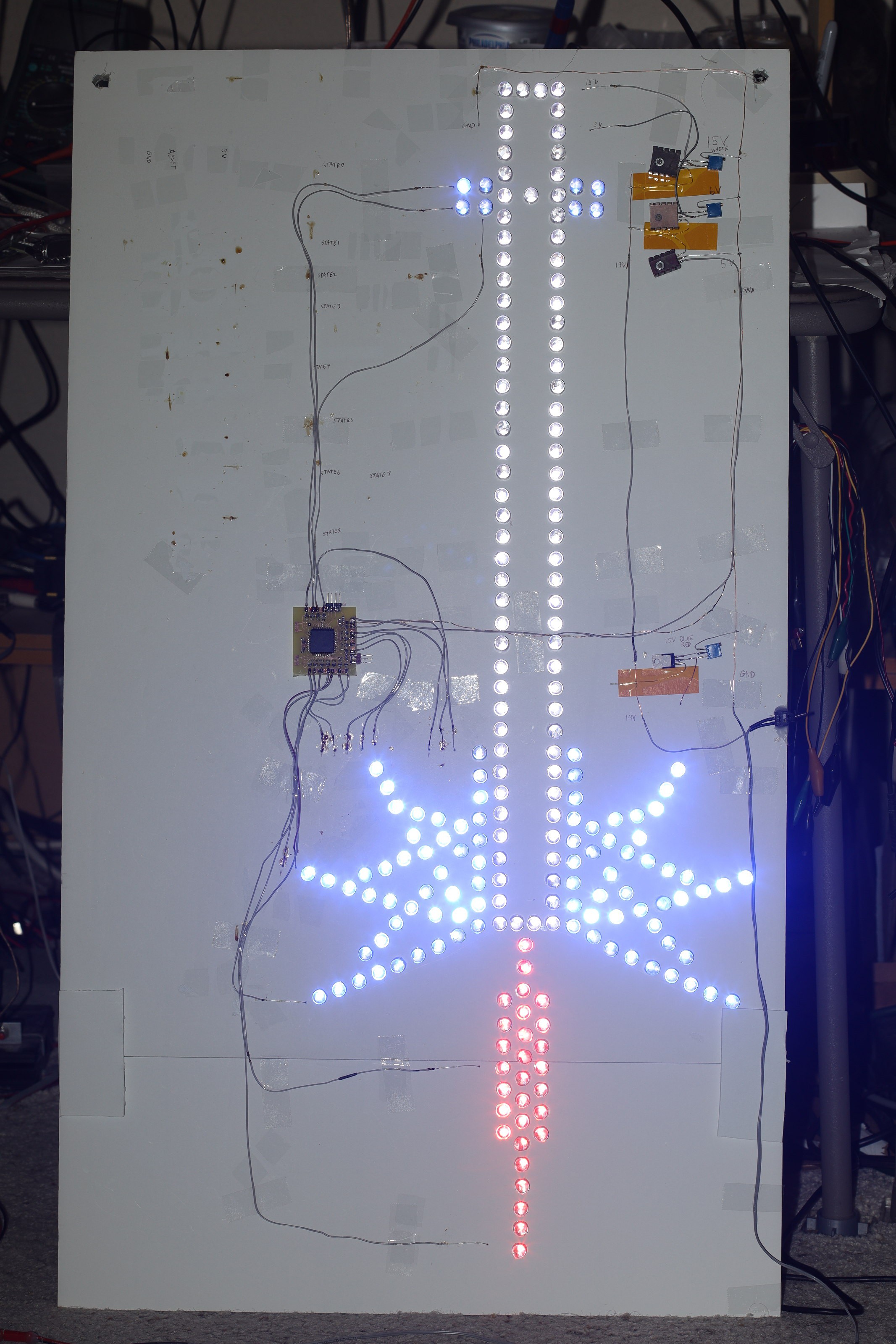
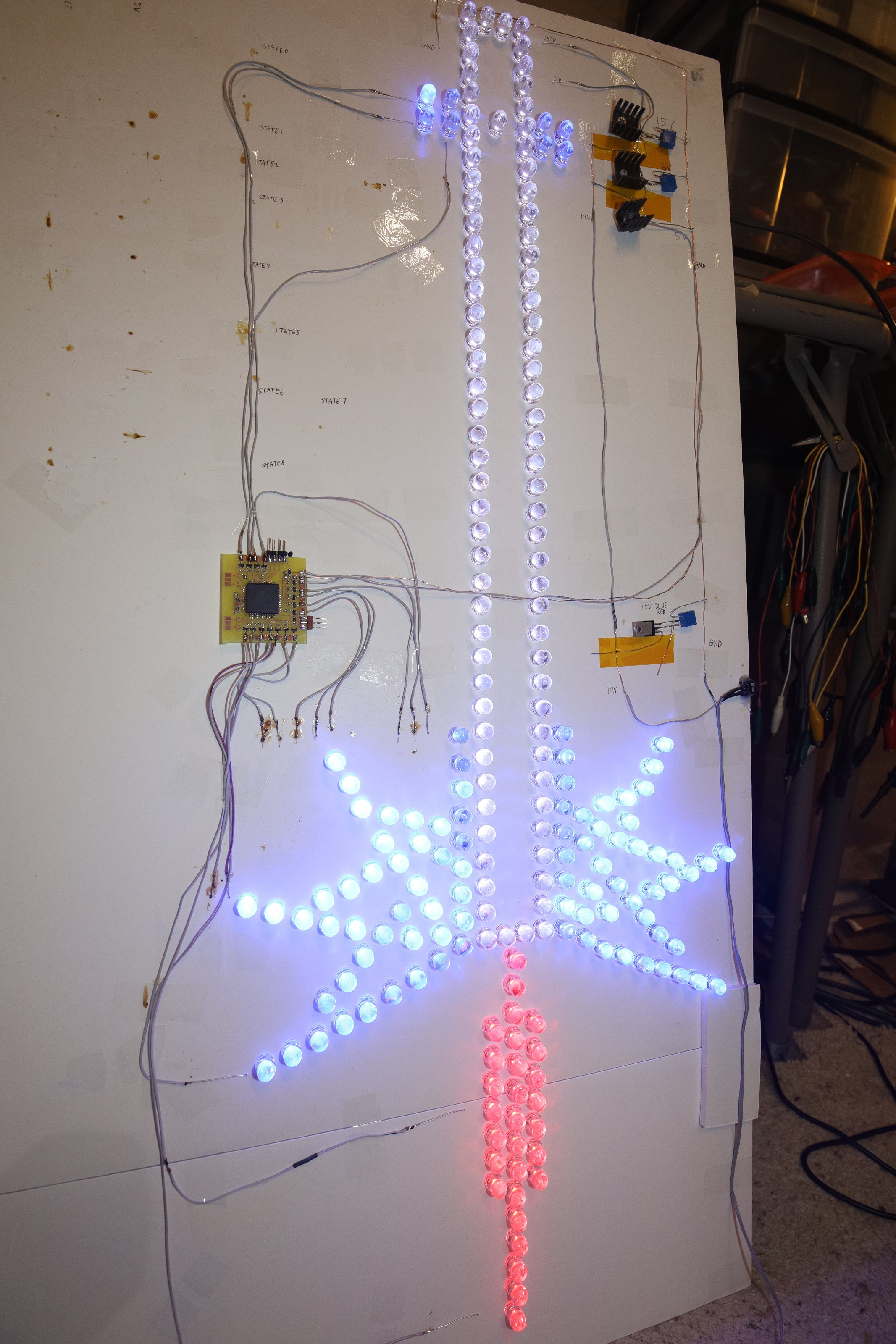
This got rid of all the bodge diodes & the flickering between states, but the LEDs were still uneven. It's not because of varying load between LED strings. It might be from running them at the lowest possible voltage instead of using current limiting resistors for every single LED.
The dissolves between LED states still couldn't be perfectly smooth. The 8 bit timer used has only 256 possible duty cycles. Even with a more fine grained timer, the duration of the smallest duty cycle is limited by the time needed to set the GPIOs. Making it more fine grained would require more clockspeed & lions are obsessed with using the lowest power possible. It runs on Commodore 64 grade 1 MIPS.
The normal animation uses 13W at 19V. If all the LEDs are on, it's 20W.
 lion mclionhead
lion mclionhead
Discussions
Become a Hackaday.io Member
Create an account to leave a comment. Already have an account? Log In.